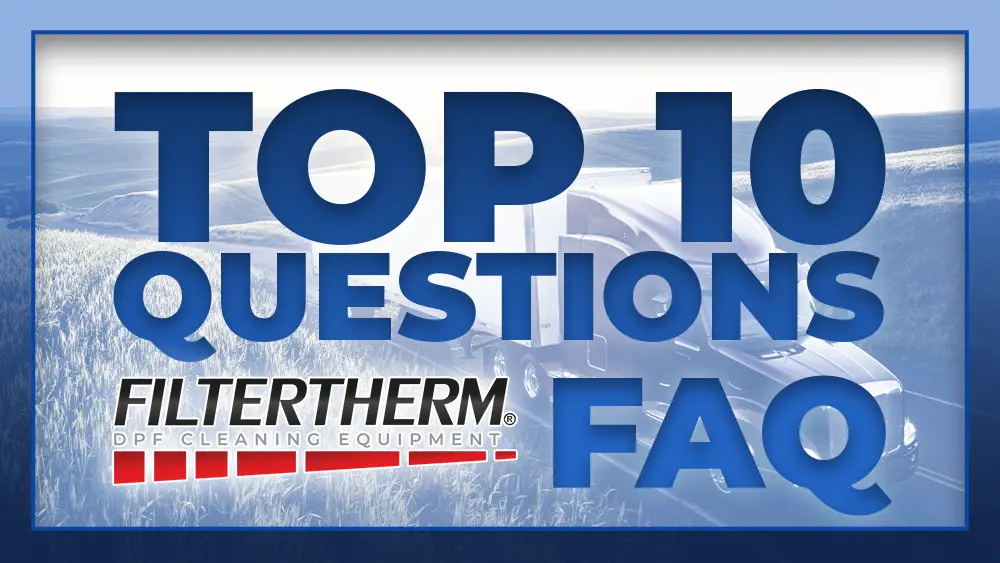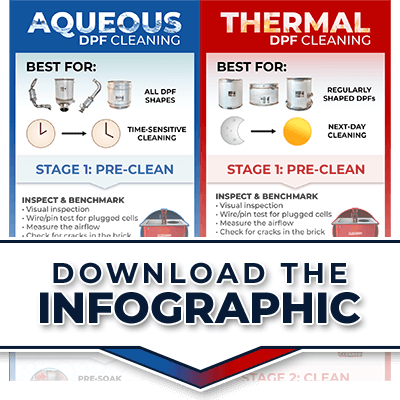
1. What’s the real ROI here? When does this equipment pay for itself?
A: You can see a positive ROI surprisingly fast, often in less than a year, for fleets with 50-100 trucks. The big win is cutting out what you currently pay for outside cleaning services, which can be $250 – $600 per filter. Add in the massive savings from reduced downtime and avoiding emergency DPF replacements, and the numbers start to look very good. Filtertherm has an ROI tool built just for fleets, where you can get a “tailored to your fleet” estimate.
Give the fleet ROI tool a try.
2. Besides cost savings, what are the top benefits?
A: Bringing DPF cleaning in-house is about more than just money. It’s about control.
- Slash Downtime: Clean a filter in hours or overnight, not days. Get your trucks back on the road, making money.
- Better Quality: You control the process. You know for sure the filter is cleaned right every time.
- Longer DPF Life: Regular, proactive cleaning prevents the damage that leads to those $3,000+ replacement bills.
- Improved MPG: A clean DPF means less engine backpressure and better fuel economy.
- Supports American Families: Filtertherm equipment is proudly made in the USA. It makes a difference – learn why.
Go deeper with the DPF Cleaning Cost Guide.

3. What’s the difference between Thermal and Aqueous cleaning?
A: Filtertherm offers two great options, and the best one depends on your fleet’s needs.
- Thermal (“Bake and Blow”): This is the classic method. You bake multiple filters overnight in an oven to turn soot to ash, then blow the ash out. It’s a workhorse for high-volume shops.
- Aqueous (Water-Based): This system uses a special pre-soak fluid and water to flush the filter clean. The huge advantage is speed—a filter can be cleaned and dried in just a couple of hours. It’s also fantastic for odd-shaped filters that normally must be cut apart.
See a side-by-side comparison of these proven methods here.
Or deploy both options like these guys did.
4. How do I know the filter is actually clean?
In the most simple terms, “Trust but verify” is the motto here. To go deeper, we show you how in this article on the subject.
Taking accurate measurements is key. You simply weigh the filter and measure its airflow both before and after cleaning. When you see the weight go down and the airflow go up, you have a good indication of how clean the filter is. There’s a DPF Flow chart for this.
It’s important to do a physical “pin test” to check for any stubborn spots and inspect for cracks in the brick using a bright light. Read more in our Inspection & Benchmarking Guide.
Filtertherm systems include an Inspection Table for benchmarking, which is designed to handle each stage of the pre-/post process.

5. What about training and support?
You’re not on your own. Filtertherm provides comprehensive training to get your technicians up to speed on using the equipment safely and effectively. They also offer ongoing phone and online support to help you with any questions down the road.
One customer had this to say:
“First and foremost, the support from Filtertherm has been invaluable. Coming from a different industry without prior knowledge, their team has been available to answer our questions and guide us through any issues, making the transition much smoother.”
Get the full story.
6. What do I need in my shop to install this?
The requirements are straightforward:
- Thermal System: You’ll need a 208-240 volt 3-phase electrical hookup for the oven and a standard air compressor for the pulse cleaner.
- Aqueous System: This needs a 208V 3-phase, 30A connection. The system is self-contained, so you don’t need a dedicated water line right next to it.
As always, check with a Filtertherm rep to confirm the specifics for your space. Also, check out the Resources page for brochures and manuals.
7. What are the ongoing costs to operate it?
Your main ongoing costs will be electricity and some basic consumables. For the Aqueous system, that means a cleaning surfactant and filtration bags. For the Thermal system, you’ll eventually replace filters in the dust collection unit. These costs are minimal compared to what you’ll save on outsourced cleaning fees.
8. Is there a warranty?
Yes! All Filtertherm equipment comes with a one-year manufacturer’s warranty. Just make sure you register your product after purchase to activate it. Learn more.
9. Will this add a lot of work for my techs?
It will add a new skill set. Filtertherm’s equipment is designed with automated controls to be as user-friendly as possible. After the initial training, your techs will become in-house aftertreatment experts, which is a huge long-term advantage for troubleshooting and maintaining fleet health.
10. Can it handle all the different DPFs in my fleet?
Absolutely. Versatility is key. The Thermal oven can bake multiple filters of various sizes at once. The Aqueous system, with its adapters, is excellent at handling a wide variety of DPFs and DOCs, especially those with unusual shapes that might otherwise be a headache to service.

Bonus Question: This is a significant purchase. Are there financing options to help manage the upfront investment?
Yes, absolutely! To make the investment even more accessible, Filtertherm partners with Tri-Lease, a financial service provider that has specialized in helping businesses finance equipment since 1992. They’ve earned a great reputation for providing reliable and sound funding solutions.
The process is designed to be simple and super-smooth:
- Get Your Quote: First, contact Filtertherm to choose the right DPF cleaning system for your fleet and get a detailed quote.
- Apply with Tri-Lease: Next, you’ll complete a straightforward online application with Tri-Lease for fast approval. You can even apply for a pre-approved amount before finalizing your equipment details.
- Finalize & Ship: Once your financing is secured, you just coordinate the delivery details, and your American-made Filtertherm system will be on its way to your shop.
Find out more about financing here: https://filtertherm.com/financing/
Get the Premier DPF Cleaning solution for your FLEET.
Give us a call. Get Answers.
Use our ROI tool to see how quickly this investment can save your fleet time and money. Financing is now available. Check it out!
Call or email to schedule a meeting with our expert Sales Team. Nadjara would be happy to help you.





